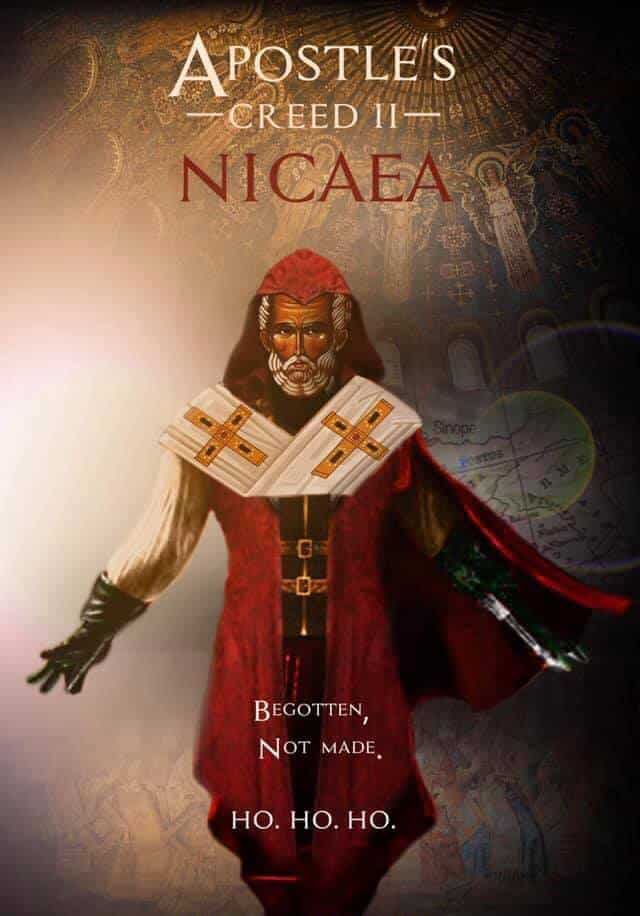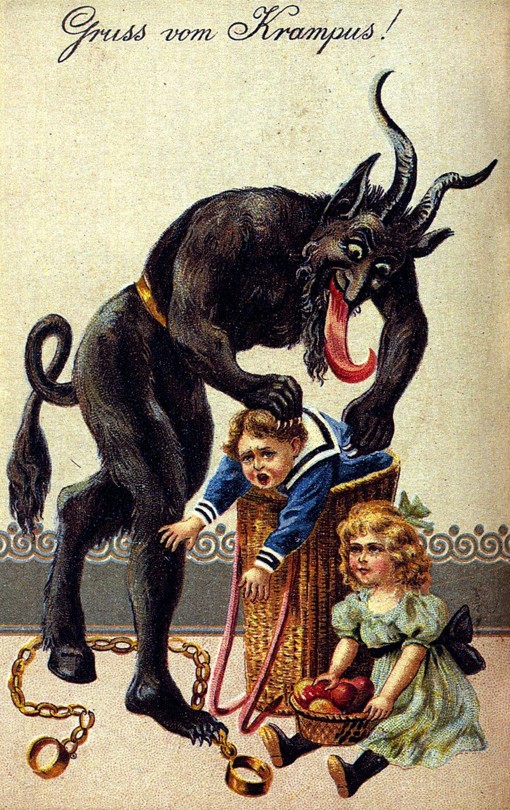
Over the last few years, I have seen increasing reactions to Saint Nicholas of Myra being reduced to some type of fat super-elf who goes around giving gifts. Even since I was a child, the idea of Santa bringing you a lump of coal if you were not a well-behaved child has been quietly removed. Could you imagine if our version of Santa was like the Central European version in which he traveled with a companion called the Krampus who actually physically punished misbehaving children?

In that type of Central European setting, Christmas could carry a bit of fear with it. In more than one country, Samichlaus or Mikolaj comes on the night of December 5, the eve of the Feast Day of St. Nicholas of Myra (the saint who was transformed into Santa Claus). Additional gifts are given on December 25, but they are given by the Christ Child, not by Samichlaus. Like in some traditions, Smichlaus is accompanied by the Schmutzli, who is just like the Krampus. He even carried thin switches to whip bad children.
Even so, it is never Samichlaus or Mikolaj or Kris Kringle or Santa Claus who administers the punishment, it is someone else. In America, we have disposed of even the coal and created this overly-sweet character who no longer bears any reference to the original saint nor carries any tinge in him that says that he might actually consider the behavior of the child before awarding a gift. To put it in Christian terms, it is grace without the necessity of either repentance or reform.
In our muscular America, some Christians have over-reacted to this and have begun to create equally false, but incredibly funny, caricatures of St. Nicholas of Myra. The one at the top of this blog is one of the incredibly funny ones that is based on an incident that happened during the First Council of Nicaea. It is recorded that Bishop Nicholas became so angry during the debate against the Arian faction that he went up and slapped the Priest Arius during one of the defenses of Arianism.
For that action, Bishop Nicholas was stripped of his ecclesiastical accouterments and locked up. It took both Jesus and Mary appearing to other bishops in dreams during the night for the decision to be reversed the next day. It is recorded that during the night, they both appeared to Bishop Nicholas and returned his omophorion (ecclesiastical bishop’s stole) to him. Many Greek icons now show Bishop Nicholas without a miter as no miter was returned by Jesus or Mary.
And so, the funny caricature pictures St. Nicholas as an assassin wearing the omophorion of a bishop with the key decision of the First Council of Nicea concerning Jesus. The Second Person of the Trinity is begotten eternally, not made in time. What makes this funny is that the actual history of St. Nicholas (what little we have) shows him as a very gentle man. This one incident during Nicaea is the only one which shows him using any violence against a person.
It should be noted that St. Nicholas’ story shows that he was never shy about confronting people. He refused to bow to his persecutors during Domitian’s Great Persecution. He stood up to generals and revealed a murderer to the authorities. He was meek, but no coward. So, there is some truth to the idea that while he was gentle as a lamb, he had a warrior’s heart. May we all be more like St. Nicholas this Advent and Christmas Seasons.



Leave a Reply